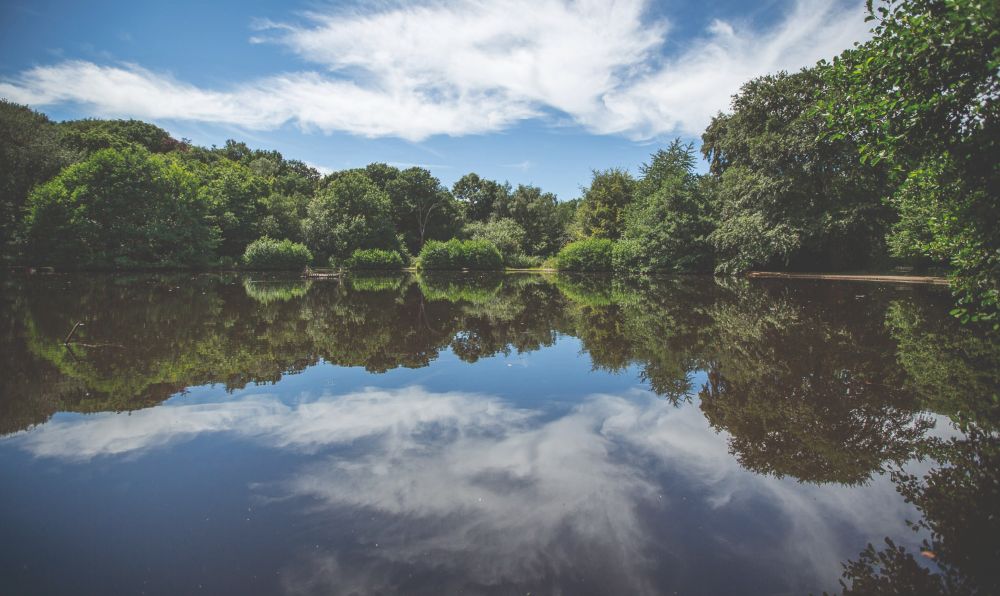
Wimbledon Walking Therapy
Wimbledon Walking Therapy
Walking therapist Jonathan Hoban reveals why Wimbledon’s green spaces could provide the key to a tranquil mind
Many of us will have been dragged out on family walks, and perhaps now shepherd our own broods around London’s lush green spaces, but it turns out a good old yomp in the great outdoors really is good for the soul.
Following childhood bereavement, a toxic battle with drug and alcohol dependency and years of therapy, Wimbledon-born Jonathan Hoban began his own journey back to better health and discovered that walking helped hugely with his anxiety. Following his recovery, Jonathan trained as a psychotherapist and while working at Queen Mary’s Hospital in Roehampton he saw dramatic improvements in his clients when he took his counselling sessions outdoors. He is now one of the leading pioneers of walking therapy.
“If you’ve got high stress or anxiety and you’re sitting in a room with no windows it can be incredibly intimidating. For some patients, simply the act of sitting down face to face with a therapist was only adding to their stress levels, so I took them out for a walk in Richmond Park and they completely relaxed. I’ve never looked back,” Jonathan says.
“I firmly believe every person has a deep connection with nature. I see clients anywhere there’s a green space essentially but the three main places I work are Wimbledon Park, Richmond Park and Battersea Park. I can clock up around 50km a week.”
Wimbledon Walking therapy: talking to teenagers
Jonathan treats all age ranges but one of the biggest revelations has been using walking therapy with teenagers.
“I trialed walking therapy at King’s College School in Wimbledon for about a year and a half and found that as soon as we started walking away from the campus the students started opening up. The informality of walking therapy encourages bonding and trust. I’ve worked with adults in highpressure jobs and I’ve been staggered by the number of teenagers suffering from the same type of burn out – showing signs of depression, anxiety and addiction, and then there are the added stresses of social media and peer pressure.
DISCOVER 7 OF THE BEST WALKS IN WIMBLEDON
Jonathan advises that heading out into the open air can also be a way of alleviating family tensions and help calm those teenage arguments.
“I’m often asked how parents can better communicate with their teenagers when they’re going through crisis. Walking outdoors, even without a therapist, provides neutral territory, and kids will start opening up. This is also the case for sensitive and ‘closed down’ men – head outside and walk together and you’ll talk and open up more.”
Jonathan’s new book, Walk With Your Wolf, provides practical advice and walking exercises as a means to confront difficult emotions, tackle stress and work through personal challenges.
“A big part of writing the book was to help those people who cannot afford counselling. It’s also really easily digestible – it can be used by teenagers or someone in the their 60s just as easily.
“I’ve dealt with so many clients across south west London, and almost every one just goes to work, home, work, home, work, home. But why not walk part of the way home? Because if you’re able to do that every day you’re anxiety will decrease. In Wimbledon, Richmond and Battersea, we are blessed with green spaces and people need to start utilising them.
“People will say ‘I don’t have the time’. I say that’s absolute rubbish. I always see people sitting in coffee shops but why not go get your coffee and go for a walk?”
According to Jonathan, it’s all about taking that first step and heading outdoors, where we can gain space for the mind and leave work and stress far behind.
jonathanhoban.com
Walk With Your Wolf by
Jonathan Hoban, £14.99,
is out now.
(image credit: Wimbledon Common. © Jamie Smith)






